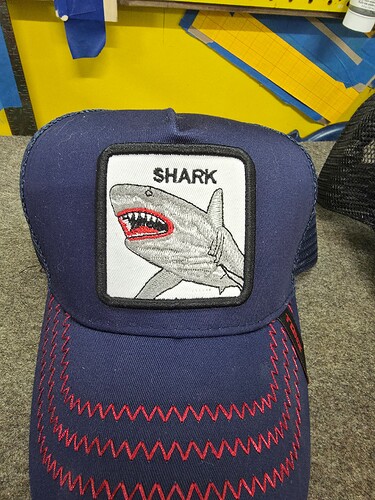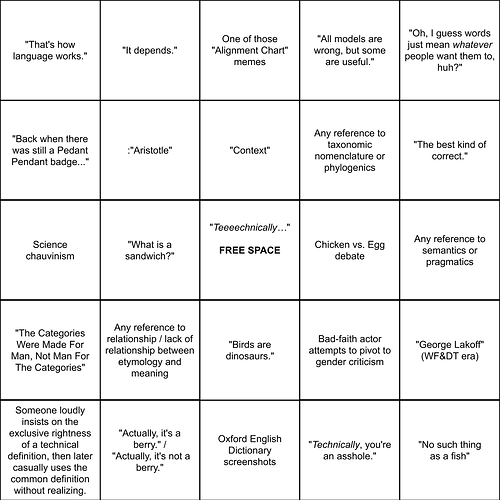
But it was this disclaimer at the beginning of the story that had me scratching my head:
Editor’s note: Owing to pre-existing relationships or other circumstances which could constitute a potential conflict of interest, neither JD Flynn nor Michelle La Rosa contributed to the reporting or editing of this story.
My opinion is frankly that the idea that words are only meaningful if they express a lineage is myopic to the point of being frustrating. I would say that the evolutionary tree here is not in dispute – except for the fact that Green here is using an obsolete version. Most evidence now supports the idea that hagfish are secondarily simplified, relatives of lampreys that have lost features like the vertebral column instead of actual non-vertebrates. But yeah, then you have a sequence of cartilaginous fish, ray-finned fish, coelacanths, lungfish, and tetrapods, each closer to the following than the preceding.
But the thing is that tetrapods have gone through some pretty ecologically significant changes. The fins have changed into limbs and the pectoral and pelvic girdles have moved onto the spine, so that they can support the body, and the head can move around. The external gills have disappeared so breathing is either through the skin, occasionally external gills like in axolotls, or usually the lungs. Those are usually much better developed than in other groups (when they even still have them), and the skin usually has much more keratin too.
All of which has the result that tetrapods have done their main diversification on land, with just a handful of subgroups becoming secondarily aquatic, while all the other groups have done their main diversification in the sea, with just a handful of subgroups venturing out onto land. So when discussing their evolution there is a meaningful split between tetrapods and…non-tetrapod vertebrates. Kind of a clunky term, that. NTVs? Ancestrally aquatic tetrapod classes? Might it be nice to have a word for that?
Talking only about phylogeny, Green apparently dismiss having such a word out of hand. Ichthyologists, well…some might also accept that “fish” includes tetrapods, and yet I can’t help but notice that every one of their books starts at hagfish and ends at lungfish. Just as if there’s a very meaningful change that makes it useful to break there, if we’re willing to consider the possibility.
Edit: Also, why is it always fish? How come there are never videos about how either insects are crustaceans or brine shrimp aren’t? How plants are just algae or animals are just protozoa? Is this really everyone’s only encounter with something that’s not a clade?
I don’t think he’s seriously arguing that tetrapods are fish. I think he’s just pointing out how hard it is to come up with a tight, robust definition of fish that’s independent of our impression of what a fish is. And if you try to define it based only on lineage, you get this weird result where all tetrapods are fish, because if you try to exclude tetrapods, where do you draw that line? And you inevitably draw it based on our impression of what a fish isn’t. I think, in other words, he’s just made an amusing video about how it’s harder to define these things than most of us realize.
Except fish are vertebrates that aren’t tetrapods, with all the features like internal gills and fins I just mentioned. Maybe it was back when people really thought of shellfish as fish, but at this point it’s not hard, save only some fossil intermediates that make deciding “tetrapod” hard too. As I said, ichthyologists have a pretty good consensus about what ichthyes they actually study.
I’d like to add that there are all sorts of categories in biology that are hard to delineate exactly. Most herbivores eat some meat and most carnivores eat some plants. And yet we all understand it is very useful to consider those as categories in most cases, and nobody would ever say maybe killer whales should be called herbivores because they evolved from the artiodactyl lineage. I don’t get what makes this get singled out as some special puzzle.
Nothing. Apparently he recently made some video about fish, and a bunch of commenters talked about the problems with defining what is and isn’t a fish, so he made this video. I think it’s just meant to be a little interesting and a little funny. It’s not inteded to be a complete treatise on the subject.
I mean, I guess that’s fair in a vacuum. In practice though I hear “you can’t define fish” more than literally any other term in science except (cringes) planet. @wazroth put it on his definition argument bingo card. I don’t mean to pick on Green, but this is why I said it was frustrating, the same half-argument never seems to find its other half and I’m tired of it.
Since I got summoned, here’s my hot take.
(Jesus, I was just thinking about this stuff while fixing lunch, before I even saw this part of this thread, ugh. I think about this all the time and it makes me angry.)
I’munna skip right over the whole part where I get up in arms about technical versus nontechnical definitions. There are no major problems with the definitions of “fish” offered in, say, M-W if we’re interested in practical, non-technical, representative rather than absolute definitions. There’s still issue to take with Hank’s commentary if we stick with technical definitoins.
There are a few unasked and unacknowledged questions we could use to interrogate Hank’s commentary. The first is, what is the utility of defining “fish”? – presumably in a scientific context. If we have an answer to that question, we can follow it up with, is cladism the best approach to achieving that utility? Hank skips the first question entirely (and makes a bit of a hash of the fact that there can be multiple, simultaneous, closely-related but distinct and context-dependent definitions for a term while he’s at it), and he takes cladism as a given for a scientific definition, when it’s not at all clear that that’s actually appropriate here. He talks about wanting fish to be “a thing” and then dismisses the existing multi-clade definition of fish as inappropriate without any explicit justification for the cladist demand, other than that it’s somehow “not useful”.
One thing really stuck out at me in Hank’s comments: he says, “It’s literally impossible to narrow it down … without arbitrarily drawing a line at the shore.” Here’s the thing: All these lines are already arbitrary, to an extent. There is nothing inherently truthful or absolute about the way that systematists draw boundaries. The boundaries exist only to serve the human purpose of understanding and predicting relationships among the living things. Species and genus (and all the rest) don’t exist in nature; they are a framing device created by humans and overlaid on reality to try to make sense of it. (This is true of every mechanism for definition and categorization.)
@danimagoo mentions how Hank is highlighting the difficulty of creating “tight, robust definitions”. And this is absolutely true, though I would take it even further and say that in nature there is no such thing as a tight, robust definition that is able to categorize with absolute precision. “Nature abhors a binary” – every aspect of it is continuous (*)-- and categories are by their very essence discrete. You’ll always be able to dig up an edge case that sits on the cusp between two definitions. If you’re determined to categorize everything you’ll be faced with a choice of arbitrarily categorizing it into an existing group, or creating a new group that encompasses the oddball. Either choice is acceptable from a categorization perspective, but one builds a certain amount of wrongness into the system while the other reduces the discriminatory power of the categorization. And you’ll always be able to find another such example, so your categories end up either increasingly fuzzy or increasingly tiny. Another choice you could make is to come to terms with the fact that categories can’t be perfect and admit non-categorized items into the system. Once again it is useful to consider the goal: what’s the purpose of making categories – of making these categories – in the first place? If you’re making technical definitions (which I’m assuming in this case) then you should be able to do that by considering the technical domain.
In the case of a “scientific” definition of “fish”, it could be that there is no single, cladist definition of “fish” that’s useful from a systematic perspective. But that’s OK! Systematics isn’t the only goal of science, and there are plenty of reasons to have a scientific definition of “fish” that is not explicitly cladist, not least of which would have to do with the sort of things that an ichthyologist might care about, like similarity of anatomy and physiology, environmental commonalities, etc. It’s not “vibes”, it’s just not systematics. “There’s no such thing as a fish” is exactly as true (or false) as “There’s no such thing as a mammal,” though the nature of the truth / falsity may be slightly different. Both are human categories with human purposes, invented and applied by humans, and both with ambiguities which, if interrogated sufficiently, call into question how their boundaries ought to be defined.
Anyway, one of these days I’ll write that conference talk. Tentative title: “The Worst Kind of Correct.”
(* Let’s not talk about quantum mechanics right now but I believe the argument can be extended there too…)
So in general, when they say it’s not arbitrary, they mean it’s precisely defined in a formal way. You can do that with evolutionary trees by saying “everything closer to this than this” or “everything closer to one of these than the other”. And we can trust that the continuous nature of the split is hidden in the gaps of the fossil record and pretend it never happened.
Except even then, in practice that leads to all these clades that are basically meaningless because they change radically in nature whenever there is a slight change to said phylogeny, versus “arbitrary” definitions that are relatively stable because they’re based on features that biologists have understood for centuries. But how do you convince people that formal isn’t inherently better? It’s needed in math, but even that would have been crippled if calculus had to wait for epsilons and deltas to get started. ![]()
Came here for that and was not disappointed.
it doesn’t actually utilize cathode ray tubes, but it does provide the fast response time and feel of gaming you might have enjoyed back in the day with these consoles. Instead, it’s an 8-inch 4:3 LCD paired with a curved acrylic panel to recreate that CRT feel and design.
It would make sense to me if the CRT style screen had a PC built into the back of it
Not me but I’m pretty sure other people would be into it






